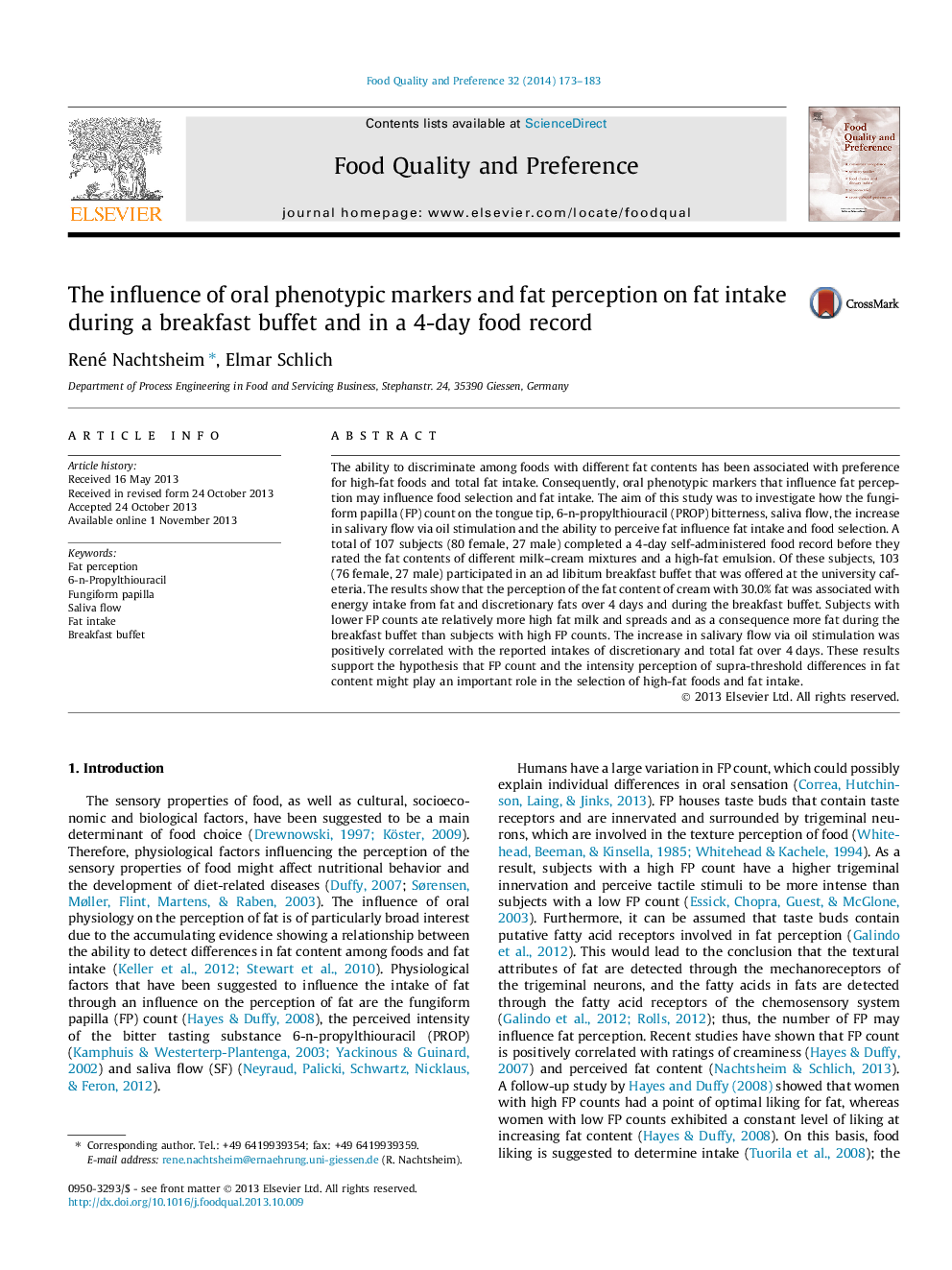| Article ID | Journal | Published Year | Pages | File Type |
|---|---|---|---|---|
| 4317264 | Food Quality and Preference | 2014 | 11 Pages |
•Fungiform papilla count influences fat intake during a breakfast buffet.•Increase of saliva flow influences fat intake over 4 days.•Supra-threshold fat perception influences intake of fat and discretionary fats.
The ability to discriminate among foods with different fat contents has been associated with preference for high-fat foods and total fat intake. Consequently, oral phenotypic markers that influence fat perception may influence food selection and fat intake. The aim of this study was to investigate how the fungiform papilla (FP) count on the tongue tip, 6-n-propylthiouracil (PROP) bitterness, saliva flow, the increase in salivary flow via oil stimulation and the ability to perceive fat influence fat intake and food selection. A total of 107 subjects (80 female, 27 male) completed a 4-day self-administered food record before they rated the fat contents of different milk–cream mixtures and a high-fat emulsion. Of these subjects, 103 (76 female, 27 male) participated in an ad libitum breakfast buffet that was offered at the university cafeteria. The results show that the perception of the fat content of cream with 30.0% fat was associated with energy intake from fat and discretionary fats over 4 days and during the breakfast buffet. Subjects with lower FP counts ate relatively more high fat milk and spreads and as a consequence more fat during the breakfast buffet than subjects with high FP counts. The increase in salivary flow via oil stimulation was positively correlated with the reported intakes of discretionary and total fat over 4 days. These results support the hypothesis that FP count and the intensity perception of supra-threshold differences in fat content might play an important role in the selection of high-fat foods and fat intake.
